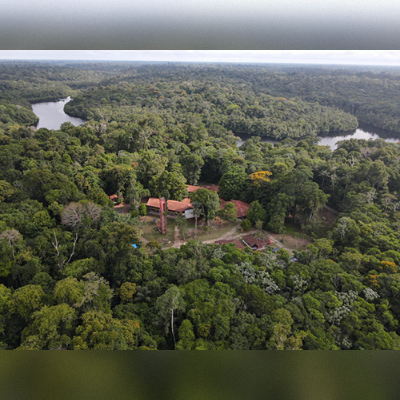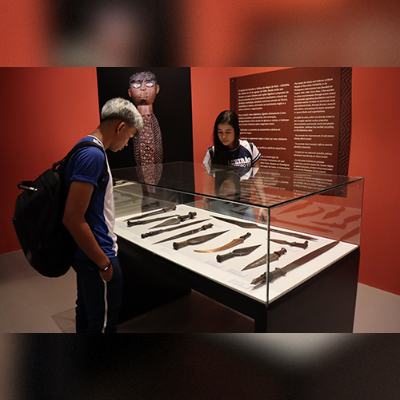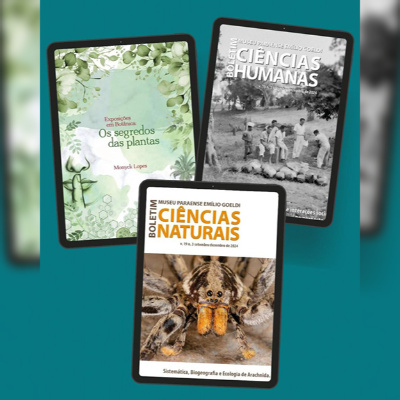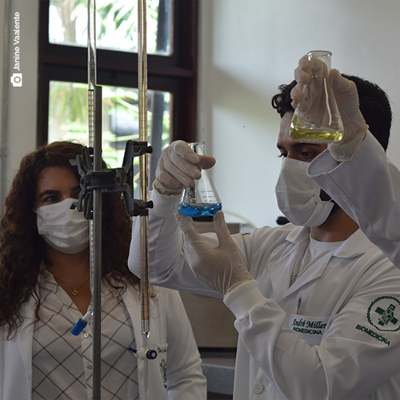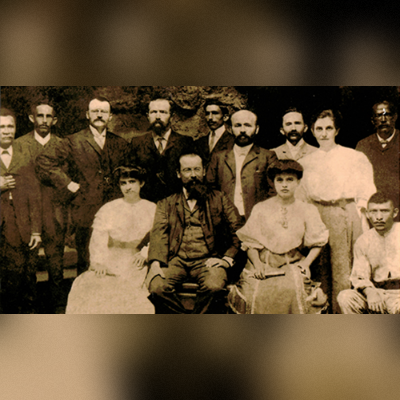
Submissões Recentes
Item type:Item, Caracterização das formações vegetais da restinga da Princesa, Ilha de Algodoal - Pará(Museu Paraense Emílio Goeldi, 1996-12-16) Bastos, Maria de Nazaré do Carmo; Silva, Manoela Ferreira Fernandes; 3168501606431044; http://lattes.cnpq.br/3168501606431044; Santos, João Ubiratan Moreira dos; 2483389565992894; http://lattes.cnpq.br/2483389565992894; Waechter, Jorge Luiz; 5791990632150474; http://lattes.cnpq.br/5791990632150474; Prost, Maria Thereza Ribeiro da Costa; 0598211237111074; http://lattes.cnpq.br/0598211237111074; Lisboa, Regina Célia Lobato; 4711567729150623; http://lattes.cnpq.br/4711567729150623; Vieira, Ima Célia Guimarães; 3761418169454490; http://lattes.cnpq.br/3761418169454490The vegetation communities of a sandy coast (restinga) of Pará state, Brazil, were studied at Princesa Beach, Algodoal Island, locatede at 00o35’03’’- 00o38’29’’S and 47o31’54’’-47o34’57’’ W.Gr., with the objective of characterizing the vegetation formations. Along transects in the direction offshore-mainland, the vegetation communities were identified and their allied geomorphologic series observed. The floristic composition of each vegetation type was evaluated using random walk collection of the flowering and/or fruiting species. The number of species found in all vegetation communities was 241. The structure of the vegetation was evaluated using the phytosociological method of quadrats. The floristic composition of the predominant herbaceous associations varied between the dry and rainy seasons, but the species with the highest importance value were the same in both seasons. For these communities Cyperaceae and Gramineae were the most important families in both seasons, while for communities which are predominated by trees and shrubs, Myrtaceae was dominant. The vegetation communities with trees and shrubs showed a low index of floristic diversity and equitability, owing to low species richness and the concentration of many specimens within a restricted group of botanical species. The studied vegetation associations showed a structure and constitution that justifies considering them distinct. The floristic similarity varied from 15 to 45%.Item type:Item, The potential of arboreal pitfall traps for sampling nontargeted bee and wasp pollinators(Museu Paraense Emílio Goeldi, 2022-08-02) Silva, Rogério R.; Arruda, Filipe Viegas de; Camarota, Flávio; Izzo, Thiago Junqueira; Bergamini, Leonardo Lima; Almeida, Rony Peterson SantosInsetos polinizadores, incluindo abelhas e vespas, estão enfrentando um declínio acentuado em suas populações nativas, causado principalmente por atividades humanas, como fragmentação florestal, urbanização e uso de agroquímicos. Para ajudar a mitigar o rápido declínio de polinizadores, novos esforços para compreender os aspectos básicos e aplicados desses organismos são necessários. Entre esses esforços, há um foco no aumento da eficiência da amostragem, incluindo uma gama mais ampla de grupos-alvo e métodos de coleta. Embora cada método tenha suas vantagens e desvantagens, a crise dos polinizadores exige métodos alternativos para analisar a diversidade e a dinâmica populacional de abelhas e vespas. Aqui, avaliamos o papel potencial das capturas acidentais de abelhas e vespas por um método amplamente utilizado para coletar formigas, mas não direcionado para abelhas: armadilhas de queda arbóreas. Comparamos a eficiência da amostragem de armadilhas de queda arbóreas com iscas de urina humana e dois métodos tradicionais para amostragem de abelhas: armadilhas de panela e armadilhas de cheiro. As armadilhas arbóreas coletaram uma alta diversidade de abelhas e vespas esfecóides e, quando comparadas com armadilhas de panela e armadilhas de odor, apresentaram a maior riqueza de espécies e a segunda maior abundância. Embora os três métodos de captura compartilhassem a maioria das espécies, cada método coletou grupos específicos de espécies, e havia espécies indicadoras para cada método de captura. Quando usadas em pares com armadilhas de panela, as armadilhas arbóreas coletaram uma maior diversidade de espécies do que as armadilhas de panela pareadas com armadilhas de odor. Além disso, cada método de captura respondeu de forma diferente à variação sazonal e, embora as armadilhas arbóreas tivessem menor diversidade durante a estação chuvosa, as armadilhas de odor detectaram diferenças apenas na abundância de espécies, e as armadilhas de panela não detectaram nenhuma diferença. Nosso estudo reforça a importância de métodos complementares na amostragem de abelhas e vespas e o uso de métodos não tradicionais para aumentar a cobertura amostral desses insetos.Item type:Item, From species descriptions to diversity patterns: the validation of taxonomic data as a keystone for ant diversity studies reproducibility and accuracy(Museu Paraense Emílio Goeldi, 2023-02-08) Silva, Rogério R. da; Feitosa, Rodrigo M.; Silva, Thiago S. R.; Camacho, Gabriela P.; Ulysséa, Mônica A.; Ladino, Natalia; Oliveira, Aline M.; Albuquerque, Emília Z. de; Ribas, Carla R.; Schmidt, Fernando A.; Morini, Maria Santina de C.; Dáttilo, Wesley; Queiroz, Antônio C. M. de; Baccaro, Fabrício B.; Santos, Jean C.; Carvalho, Karine S.; Sobrinho, Tathiana G.; Quinet, Yves P.; Moraes, Aline B.; Vargas, André B.; Torezan-Silingardi, Helena Maura; Souza, Jorge Luiz P.; Marques, Tatianne; Izzo, Thiago; Lange, Denise Lange; Santos, Iracenir A. dos; Del-Claro, Kleber; Nahas, Larissa; Paolucci, Lucas; Soares, Stela A.; Harada, Ana Y.; Rabello, Ananza M.; Costa-Milanez, Cinthia B. da; Diehl-Fleig, Eduardo; Campos, Renata B. F.; Solar, Ricardo; Frizzo, Tiago; DaRocha, Wesley; Nogueira, AnselmoOs resultados de pesquisas em ciências naturais precisam ser comparáveis e reprodutíveis para melhorar efetivamente nossa compreensão de padrões ecológicos e comportamentais. Nesse sentido, as fronteiras do conhecimento em estudos de biodiversidade estão diretamente ligadas à pesquisa taxonômica, especialmente em regiões tropicais ricas em espécies. Aqui, analisamos as informações taxonômicas disponíveis em 470 estudos sobre a diversidade de formigas brasileiras publicados nos últimos 50 anos. Nosso objetivo foi quantificar a proporção de estudos que fornecem dados suficientes para validar a identificação taxonômica, explorar a frequência de estudos que reconhecem adequadamente seu histórico taxonômico e investigar os principais recursos para a identificação de formigas no Brasil. Descobrimos que a maioria dos estudos sobre a diversidade de formigas brasileiras (73,6%) declarou explicitamente os métodos usados para identificar seus espécimes. No entanto, a proporção de artigos que fornecem dados completos para as instituições repositório e espécimes comprobatórios é extremamente pequena (5,8%). Além disso, apenas 40,0% dos estudos apresentaram consistentemente autoridades taxonômicas e anos de descrição, raramente referenciando publicações taxonômicas corretamente. Por sua vez, o número de especialistas e instituições consultados para identificação de formigas no Brasil aumentou nos últimos anos, juntamente com o número de estudos que explicitam seus procedimentos taxonômicos para identificação de formigas. Nossos resultados evidenciam uma mudança entre gerações no que diz respeito ao reconhecimento da taxonomia como ciência fundamental, aprofundando nossa compreensão da biodiversidade.Item type:Item, Sampling local ant diversities and the importance of trait analyses(Museu Paraense Emílio Goeldi, 2023-07-09) Silva, Rogério R.; Probst, Rodolfo S.; Brandão, Carlos R. F.As formigas constituem um grupo de invertebrados incrivelmente diverso e onipresente na maioria dos ecossistemas terrestres. Embora amplamente amostrados, a maioria dos inventários de formigas não avalia o efeito de diferentes técnicas de amostragem na captura de métricas não tradicionais de diversidade. Nosso objetivo foi quantificar as diversidades TD (taxonômica) e FD (funcional) para uma assembleia local de formigas, integrando métricas e avaliando a complementaridade de armadilhas de queda e extratores de Winkler para a serapilheira versus faunas de formigas epigéicas, e determinar o efeito das técnicas de amostragem na composição funcional (médias ponderadas pela comunidade de 11 características morfológicas) e na diversidade funcional (morfoespaço multicaracterística medido com três métricas diferentes). Amostramos a comunidade local em um fragmento de Mata Atlântica usando armadilhas de queda com duração de uma semana e amostras de serapilheira de 1 m² submetidas a extratores Winkler e quantificamos a contribuição da técnica para capturar exclusivamente o morfoespaço das formigas aplicando um novo índice (PWindex). Embora a DT das formigas tenha se sobreposto, a DF foi significativamente afetada pela técnica de amostragem. Ao controlar os efeitos da DT, a comunidade coletada por cada técnica foi estruturada de forma diferenciada. DT mais alta não se traduziu em um morfoespaço mais amplo para as formigas Winkler. As armadilhas recuperaram assembleias funcionalmente mais superdispersas. As armadilhas e as formigas Winkler se sobrepuseram na amostragem da comunidade geral, mas cada método de amostragem contribuiu com um espectro único para o morfoespaço das formigas. Nossos resultados sugerem a importância da incorporação de métricas de DF em inventários locais de formigas e a importância de técnicas de amostragem ao medir a magnitude da DF e da estrutura da comunidade. Nosso PWindex esclarece ainda mais os efeitos da amostragem para assembleias de formigas.Item type:Item, A systematic review of the land use change effects on ant diversity in Neotropics(Museu Paraense Emílio Goeldi, 2024-11) Silva, Rogério R.; Wilker, Icaro; Queiroz, Antônio C.M.; Ribas, Carla R.; Morini, Maria Santina C.; Lasmar, Chaim J.; Schmidt, Fernando A.; Feitosa, Rodrigo M.; Nogueira, Anselmo; Baccaro, Fabrício B.; Ulysséa, Mônica A.; Izzo, Thiago; Paolucci, Lucas N.; Quinet, Yves P.; Vargas, André B.; Harada, Ana Y.; Sobrinho, Tathiana G.; Marques, Tatianne G.; Souza, Jorge L.P.; Del-Claro, Kleber; Lange, Denise; Santos, Jean C.; Campos, Renata B.F.; Albuquerque, Emília Z.; Rabello, Ananza M.; Solar, Ricardo R.C.; Soares, Stela A.; Carvalho, Karine S.; Moraes, Aline B.; Torezan-Silingardi, Helena M.; Nahas, Larissa; Santos, Iracenir Andrade dos; Costa-Milanez, Cinthia B.; Esteves, Fl´avia A.; Frizzo, Tiago; daRocha, Wesley; Martello, Felipe; Diehl-Fleig, EduardoMudanças no uso da terra representam uma das principais causas da perda de biodiversidade terrestre, particularmente em ecossistemas tropicais. No Brasil, um país que abrange seis biomas distintos e uma das maiores diversidades de formigas do mundo, as crescentes mudanças no uso da terra estão tendo efeitos prejudiciais à biodiversidade. Nosso objetivo neste estudo foi resumir o impacto das mudanças no uso da terra sobre formigas no Brasil por meio de uma revisão sistemática. Aderimos à metodologia PRISMA Eco-Evo e conduzimos uma revisão qualitativa dos estudos, bem como uma meta-análise com foco na riqueza e abundância de espécies de formigas. Especialmente, observamos um efeito negativo mais pronunciado em conversões mais contrastantes, como de floresta tropical para usos antropogênicos abertos da terra. Associamos a diminuição da riqueza a mudanças drásticas na estrutura da vegetação. Consequentemente, isso leva a variações extremas de temperatura, redução da umidade e um declínio na variedade e quantidade de recursos alimentares e locais de nidificação. Nossas descobertas fornecem uma base para a conservação e o manejo dos usos antropogênicos da terra em regiões impactadas pelo homem. Mais especificamente, destacamos que os planos de gestão futuros devem visar usos antropogênicos da terra que se assemelhem mais à vegetação natural original, a fim de manter as condições e aumentar a disponibilidade de recursos para a biodiversidade nos novos habitats. Além disso, evitar práticas de gestão intensiva, como o uso de fertilizantes e pesticidas em sistemas agrícolas, também pode contribuir para a conservação da entomofauna em termos de riqueza e abundância de espécies, e potencialmente beneficiar os serviços ecossistêmicos.



